This article was co-authored by Lisa Bryant, ND. Dr. Lisa Bryant is Licensed Naturopathic Physician and natural medicine expert based in Portland, Oregon. She earned a Doctorate of Naturopathic Medicine from the National College of Natural Medicine in Portland, Oregon and completed her residency in Naturopathic Family Medicine there in 2014.
There are 14 references cited in this article, which can be found at the bottom of the page.
wikiHow marks an article as reader-approved once it receives enough positive feedback. This article received 18 testimonials and 80% of readers who voted found it helpful, earning it our reader-approved status.
This article has been viewed 388,679 times.
Blood clots form when your blood cells stick together to form a clump. This is normal and helpful if you have a cut, but clots can also form without a wound present and potentially cause a stroke or heart attack. While a blood clot is a medical emergency that can only be cleared with a medical |diagnosis and treatment, there are a variety of lifestyle changes and home remedies you can try to support your doctor’s treatment and help prevent future clots. In this article, we’ll show you how to stimulate healthy blood flow, upgrade your diet, and more. Let’s get started!
Things You Should Know
- Try to exercise daily and avoid sitting for very long periods of time. Flex your legs and shift your position occasionally if you have to stay seated.
- Focus on positive lifestyle choices like maintaining a healthy weight and quitting smoking to reduce your risk of blood clots.
- Reduce your alcohol and salt consumption. Try to eat at least 1 gram of Omega-3 fatty acids daily.
- Remember that a blood clot will not clear on its own or without medical treatment. Home remedies can supplement your treatment and help prevent future clots.
Steps
Stimulating Blood Flow
Staying immobile or inactive puts you at a higher risk for clots because it causes your blood to pool in one spot. You might be immobile due to health reasons, or you may be on a long trip where you can’t move much. In either case, do your best to move around as much as possible to stimulate circulation. Improving your circulation won't clear existing clots, but it could help you avoid more clots in the future.
-
1Exercise every day to keep your blood flowing. Regular exercise helps prevent your blood from pooling and causing clots. If you don’t work out regularly, then put yourself on a new schedule and get some exercise 5-7 days per week. Aerobic exercises that get your heart pumping faster are best, so focus on running, biking, swimming, or cardio workouts for the best results.[1]
- You don’t have to exercise hard. Even a daily walk is good to lower your risk for blood clots.
- In general, experts recommend getting 30 minutes of exercise at least 5 days during the week, for a total of 150 minutes per week. This should be enough activity to lower your blood clot risk.
-
2Start moving around again as soon as you can if you’ve had surgery. People who have recently had surgery or an injury are at a higher risk for blood clots because they have to stay immobile for a while afterward. As soon as you’re feeling up to it, get up and move around every day. This reduces your risk for clots.[2]
- Even if you can only get up and walk to the bathroom or another room of your home, that’s a good start.
Advertisement -
3Get up and walk every 30-60 minutes if you sit for a long time. Whether you work at a desk or are taking a long trip, prolonged sitting can put you at a higher risk for blood clots. Once or twice every hour, get up, walk around, and stretch a bit to stimulate blood flow. Even a 5 minutes of walking per hour reduces your clotting risk.[3]
- If you’ve had clots in the past, you may need to move around more often. Talk to your doctor for their recommendation.
- The reverse is true as well. If you stand in one place for a long time, you could also be at risk for clots. Try sitting down every hour or stretching out regularly to stay mobile.
-
4Flex your feet and legs if you’re unable to get up and walk. If you can’t get up, like if you’re on a plane, then you can still take some steps to stimulate blood flow. Try wiggling your toes, flexing your ankles, and moving your legs up and down as much as you can. Even this little bit of motion can help prevent clots.
- If you have enough room, try pulling your legs up to your chest as well. This stretches out your whole lower body.
-
5Shift your sitting position often if you have to stay seated. This is another good way to stay moving if you can’t get up. Try shifting your seating position as often as you can. Switch the pressure from one side of your body to the other, lean on your armrest, lift one leg, and so on. This prevents blood from pooling in one spot.[4]
Lifestyle Changes
Besides staying active, you can also reduce your risk for clots with a few more lifestyle changes. These tips can all help improve the circulation in your body, stimulating blood flow and making clots less likely.
-
1Lose weight if you have to. Being overweight or obese puts you at a higher risk for developing blood clots. If you’re overweight, talk to your doctor and determine an ideal bodyweight for yourself. Then design an exercise and diet regimen to reach that goal.[5]
- Losing weight can also lower your blood pressure, which reduces your risk of blood clots further.
- Avoid crash or extreme dieting. This is bad for your health and people often regain weight after they stop an extreme diet.[6]
-
2Wear compression stockings if you’ve had clots in your legs. These stockings help maintain circulation in your legs. Doctors usually recommend them for people at a higher risk of clots or who have had leg clots in the past. If your doctor suggests these, then follow their recommendations on wearing them correctly.[7]
- People often wear compression stockings if they’ll be seated for a long time, like on a plane. Even if you don’t wear them all the time, your doctor might tell you to wear them during flights.
- Compression stockings are only meant to prevent clots from forming, not treat active ones. Wait until your initial clot clears to use them.[8]
-
3Avoid sitting with your legs crossed. Keeping your legs crossed cuts off circulation in your lower body and puts you at a higher risk for leg clots. Only sit with your legs crossed for a few minute at a time, then uncross them to keep your circulation up.
- After you uncross your legs, try wiggling your feet around a bit to stimulate blood flow again.
-
4Elevate your legs above your heart to stimulate blood flow. Elevating your legs keeps your circulation up and prevents your blood from pooling in your legs. If you’re sitting on a couch, try laying back and propping your feet up on the armrest or a pillow.[9]
- You can also elevate the end of your bed to keep your legs up while you sleep. However, don’t place a pillow under your knees to do this. This could cut off circulation.
-
5Quit smoking to reduce your risk of clotting. Smoking increases your risk of developing clots, along with numerous other health problems. If you smoke, it’s best to quit as soon as possible. If you don’t smoke, then don’t start in the first place.[10]
- Secondhand smoke could also cause health problems, so don’t let anyone smoke in your home.
Dietary Tips
There is no single dietary change that will prevent blood clots. In general, however, a healthy diet helps keep you in good shape and maintains your cardiovascular health. This is all good for reducing your risk of clots.
-
1Practice a healthy, balanced diet. A healthy diet helps you maintain a healthy bodyweight, lower your blood pressure and cholesterol, and improve your cardiovascular health. This all helps prevent clotting, so if you have to, make some healthy dietary changes to improve your diet.[11]
- Include plenty of produce in your diet for vitamins, minerals, and antioxidants. Have at least 5 servings of fruits and vegetables each day.
- Get your proteins from lean sources like fish, poultry, beans, or nuts.
- Switch to whole-wheat products to reduce your intake of simple carbohydrates.
- Avoid fatty, fried, salty, or processed foods as much as possible. These can all raise your weight and blood pressure.
-
2Drink plenty of fluids to prevent dehydration. Dehydration prevents your blood from flowing well, which could increase your risk for clots. Drink plenty of water every day to keep yourself hydrated and lower your risk of clotting.[12]
- The common recommendation is for everyone to drink 6-8 glasses of water per day, which should keep most people hydrated. However, if you feel thirsty or your urine is dark yellow, then drink some more water.
-
3Eat at least 1 g of omega-3s each day. Omega-3s improve your cardiovascular health and could help prevent clots. The main sources for these nutrients are oily fish like salmon, mackerel, sardines, and herrings. You can also get it from nuts, seeds, and vegetable oils.[13]
- If you’re unable to get enough omega-3s from your regular diet, you can also take a fish oil or algae supplement for a higher dose. Talk to your doctor and follow their recommendations for the right supplement.
-
4Follow a low-salt diet. Salt constricts your blood vessels and raises your blood pressure, all of which could put you at a higher risk for clots. Try to avoid very salty foods like fried or processed meals, and don’t add more salt to your food to keep your intake under control.[14]
- The official recommendation for general health is to keep your sodium intake below 2,300 mg per day. If you’ve had clots in the past, your doctor may restrict your sodium intake further.
-
5Limit your vitamin K intake to 90-120 mcg per day. While your body needs vitamin K, this nutrient helps your blood coagulate. If you’ve had blood clots in the past, then excessive vitamin K could put you at a higher risk for clotting. You’re your vitamin K intake within the recommended 90-120 mcg per day to avoid any problems.[15]
- Leafy green vegetables are very high in vitamin K, so only have 1 serving per day. Then switch to vegetables with less vitamin K like beans or carrots.
- High vitamin K levels could interact with blood thinners like warfarin. Talk to your doctor if you’re on this medication to determine a safe vitamin K level.
-
6Drink alcohol in moderation. Alcohol can cause dehydration, which puts you at a higher risk for clotting. If you drink, limit yourself to 1-2 alcoholic drinks per day to avoid problems.[16]
- Binge drinking is harmful as well. Even if you only have 6 drinks in a week, having them all on the same day will dehydrate you.
- If you’ve had clots in the past, your doctor might recommend that you cut alcohol out of your diet entirely. Follow these instructions if your doctor suggests this.
Medical Takeaways
While there are many ways to reduce your risk of developing blood clots, you can’t actually cure a clot on your own. Blood clots are medical emergencies, so visit your doctor as soon as possible if you think you have one. After receiving treatment, then you can take some steps to reduce your overall risk of developing another clot.
Expert Q&A
-
QuestionMy doctor tells me that my body will naturally dissolve my DVT and PE clots. I cannot find any info on how my body will do this. What are the mechanisms used by the body to dissolve clots?
 Lisa Bryant, NDDr. Lisa Bryant is Licensed Naturopathic Physician and natural medicine expert based in Portland, Oregon. She earned a Doctorate of Naturopathic Medicine from the National College of Natural Medicine in Portland, Oregon and completed her residency in Naturopathic Family Medicine there in 2014.
Lisa Bryant, NDDr. Lisa Bryant is Licensed Naturopathic Physician and natural medicine expert based in Portland, Oregon. She earned a Doctorate of Naturopathic Medicine from the National College of Natural Medicine in Portland, Oregon and completed her residency in Naturopathic Family Medicine there in 2014.
Licensed Naturopathic Physician Your body will use a process called Fibrinolysis to dissolve blood clots you develop. Your cells and enzymes, such as fibrinogen, plasmin, platelets and proteins, work together to break down the clots. This is the natural process.
Your body will use a process called Fibrinolysis to dissolve blood clots you develop. Your cells and enzymes, such as fibrinogen, plasmin, platelets and proteins, work together to break down the clots. This is the natural process. -
QuestionCan you fix a blood clot by changing your diet?
 Sarah Gehrke, RN, MSSarah Gehrke is a Registered Nurse and Licensed Massage Therapist in Texas. Sarah has over 10 years of experience teaching and practicing phlebotomy and intravenous (IV) therapy using physical, psychological, and emotional support. She received her Massage Therapist License from the Amarillo Massage Therapy Institute in 2008 and a M.S. in Nursing from the University of Phoenix in 2013.
Sarah Gehrke, RN, MSSarah Gehrke is a Registered Nurse and Licensed Massage Therapist in Texas. Sarah has over 10 years of experience teaching and practicing phlebotomy and intravenous (IV) therapy using physical, psychological, and emotional support. She received her Massage Therapist License from the Amarillo Massage Therapy Institute in 2008 and a M.S. in Nursing from the University of Phoenix in 2013.
Registered Nurse A diet with fruits and vegetables, complex carbohydrates, and good fats along with exercise may help prevent the formation of new clots that are not caused by a traumatic injury. If the clot is in the blood vessel, it will need to be medically treated to prevent dangerous complications (stroke, heart attack, pulmonary embolism).
A diet with fruits and vegetables, complex carbohydrates, and good fats along with exercise may help prevent the formation of new clots that are not caused by a traumatic injury. If the clot is in the blood vessel, it will need to be medically treated to prevent dangerous complications (stroke, heart attack, pulmonary embolism). -
QuestionI have a "traumatic hematoma" of the buttock. Will the "hump" ever go away?
 Sarah Gehrke, RN, MSSarah Gehrke is a Registered Nurse and Licensed Massage Therapist in Texas. Sarah has over 10 years of experience teaching and practicing phlebotomy and intravenous (IV) therapy using physical, psychological, and emotional support. She received her Massage Therapist License from the Amarillo Massage Therapy Institute in 2008 and a M.S. in Nursing from the University of Phoenix in 2013.
Sarah Gehrke, RN, MSSarah Gehrke is a Registered Nurse and Licensed Massage Therapist in Texas. Sarah has over 10 years of experience teaching and practicing phlebotomy and intravenous (IV) therapy using physical, psychological, and emotional support. She received her Massage Therapist License from the Amarillo Massage Therapy Institute in 2008 and a M.S. in Nursing from the University of Phoenix in 2013.
Registered Nurse The time a hematoma takes to heal boils down to it's size. A small hematoma may take one to two weeks where as a larger hematoma may take several months. The healing process will also depend on your bodies natural ability to heal.
The time a hematoma takes to heal boils down to it's size. A small hematoma may take one to two weeks where as a larger hematoma may take several months. The healing process will also depend on your bodies natural ability to heal.
Warnings
- Blood clots are medical emergencies, so don’t try to treat one by yourself.⧼thumbs_response⧽
- If you experience a rapid heartbeat, shortness of breath, chest tightness, shooting pain, confusion, or dizziness, call your local emergency service number like 911 right away.[18]⧼thumbs_response⧽
References
- ↑ https://my.clevelandclinic.org/health/diseases/17675-blood-clots/prevention
- ↑ https://www.saintlukeskc.org/health-library/preventing-deep-vein-thrombosis-after-surgery
- ↑ https://my.clevelandclinic.org/health/diseases/16911-deep-vein-thrombosis-dvt/prevention
- ↑ https://www.ahrq.gov/patients-consumers/prevention/disease/bloodclots.html
- ↑ https://www.nhs.uk/conditions/blood-clots/
- ↑ https://www.pennmedicine.org/updates/blogs/health-and-wellness/2018/june/crash-diets-and-weight-loss
- ↑ https://www.ahrq.gov/patients-consumers/prevention/disease/bloodclots.html
- ↑ https://medlineplus.gov/ency/patientinstructions/000597.htm
- ↑ https://www.ucsfhealth.org/education/after-acl-surgery
- ↑ https://www.heart.org/en/health-topics/venous-thromboembolism/understand-your-risk-for-excessive-blood-clotting
- ↑ https://newsinhealth.nih.gov/2021/05/blood-clots-explained
- ↑ https://www.heart.org/en/health-topics/venous-thromboembolism/understand-your-risk-for-excessive-blood-clotting
- ↑ https://www.urmc.rochester.edu/encyclopedia/content.aspx?contenttypeid=1&contentid=3054
- ↑ https://newsinhealth.nih.gov/2021/05/blood-clots-explained
- ↑ https://www.hsph.harvard.edu/nutritionsource/vitamin-k/
- ↑ https://columbiasurgery.org/news/2019/02/27/how-avoid-blood-clots-when-flying-advice-vascular-surgeon
- ↑ https://www.hopkinsmedicine.org/armstrong_institute/improvement_projects/infections_complications/VTE/patients.html
- ↑ https://www.saintlukeskc.org/health-library/preventing-deep-vein-thrombosis-after-surgery
About This Article
To clear blood clots naturally, try to get in 30 minutes of exercise on most days of the week by doing things like walking, riding a bike, swimming, or playing sports. You can also help prevent blood clots from forming by doing yoga for a few minutes every day, which is great for your circulation. Also, make sure you're drinking plenty of water throughout the day since dehydration can contribute to blood clots. To learn how to change your diet to clear blood clots, scroll down!

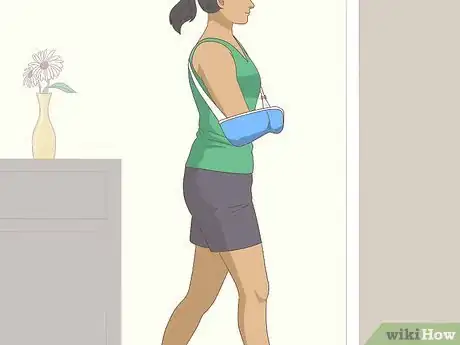
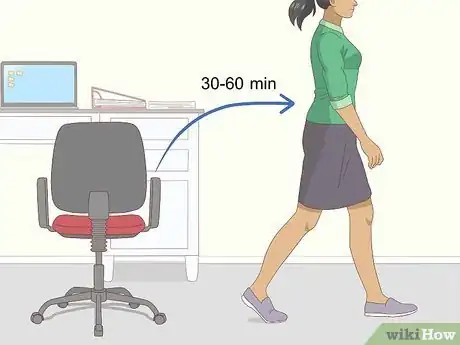


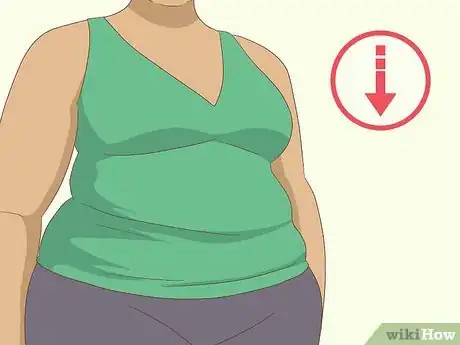
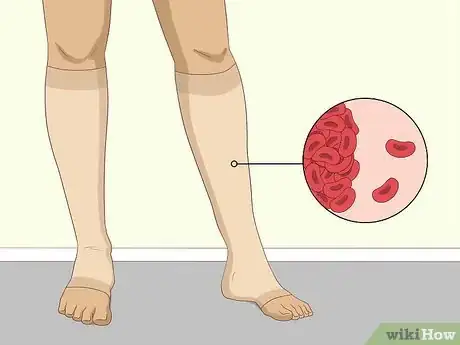
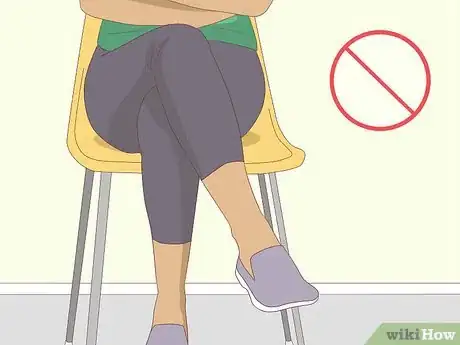

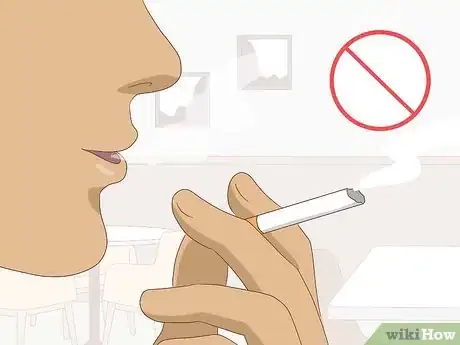
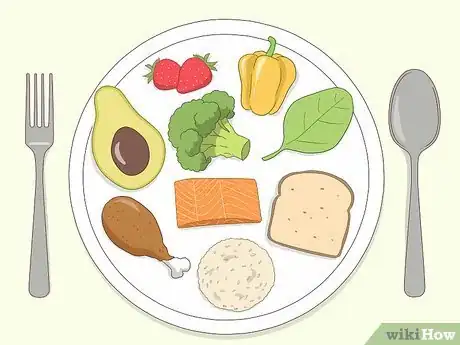
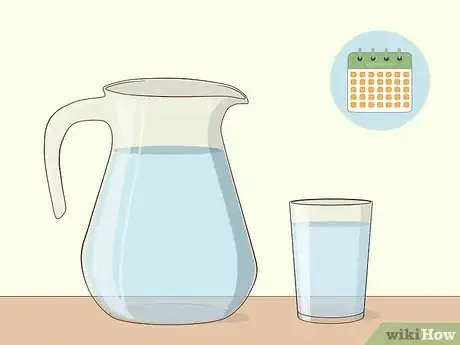

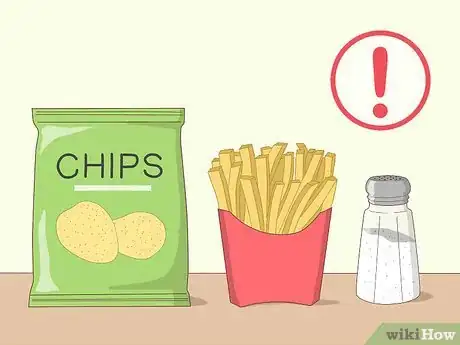
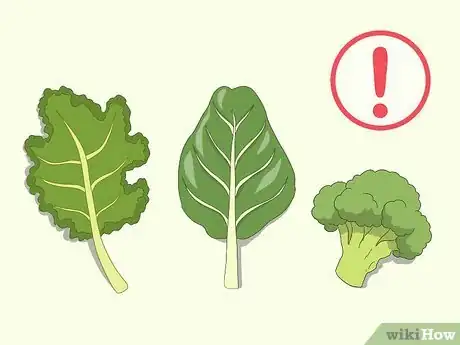


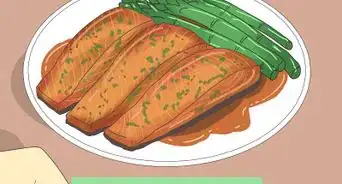
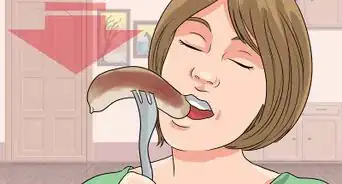



-Step-13.webp)

-Step-16.webp)
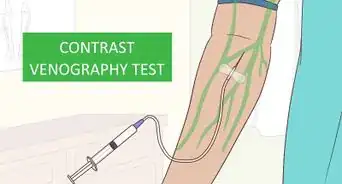
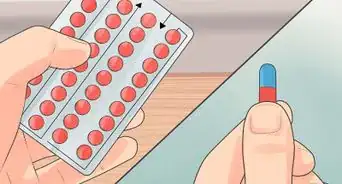
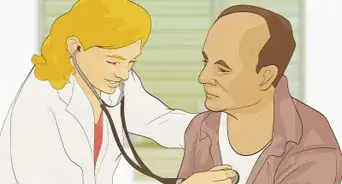












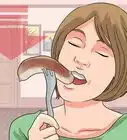




































Medical Disclaimer
The content of this article is not intended to be a substitute for professional medical advice, examination, diagnosis, or treatment. You should always contact your doctor or other qualified healthcare professional before starting, changing, or stopping any kind of health treatment.
Read More...